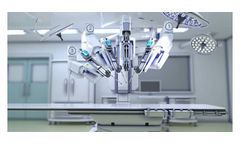General Surgery Articles & Analysis
13 articles found
A recent study led by Decan Jiang and colleagues from RWTH Aachen and Heidelberg University Hospitals in Germany has shed light on how porcine models are helping surgical training—particularly in the complex field of kidney transplantation. Pigs are anatomically and physiologically close to humans, making them ideal candidates for surgical training. Practicing renal ...
Technologies such as the shoulder CPM (continuous passive motion) device and light-based bioprinters are redefining rehabilitation and regenerative medicine. From general surgery tables designed for optimal patient positioning to new muscle treatment approaches, medical equipment continues to evolve, ensuring better outcomes and improved patient ...
Summary As a medical resident, investing in the right surgical loupe and LED headlight is a crucial step in ensuring precision, comfort, and long-term health. Loupes can enhance your vision, allowing you to perform procedures with greater accuracy. However, choosing the right pair requires careful consideration of several factors, such as working distance, depth of field, and magnification. For ...
Caresyntax hosted a roundtable discussion on how digital transformation—specifically the collection of data in the surgical suite—can drive both quality and return on investment (ROI). The participants included a panel of esteemed healthcare professionals in surgery, nursing, investing, sales, healthcare technology, and academics. The following is a summary of the new pathways and ...
The Acessa ProVu system is used by trained physicians during laparoscopic surgery under general anesthesia. Rare but serious risks of this procedure include, but are not limited to, infection, internal injury, blood loss and complications related to laparoscopic surgery and/or general anesthesia. ...
Often, dermal substitutes are selected as a surgical option for temporizing the wound bed while also facilitating dermal repair with tissue generation. Dermal substitutes are often used for patients who have sustained: Partial and full-thickness wounds Pressure ulcers, diabetic ulcers, venous ulcers, chronic ulcers, and vascular ulcers Surgical wounds (donor sites/grafts, ...
The competitive stakes in robotic surgery have never been higher as medical device companies try to disrupt the market that Intuitive Surgical pioneered more than two decades ago. ...
Pediatric Short Bowel Syndrome (also called SBS or Short Gut Syndrome) generally develops shortly after birth due to an underlying gastrointestinal (GI) condition. The condition then can lead to intestinal surgery, in which part of the short bowel is removed. SBS is a devastating condition where patients struggle to absorb life-sustaining nutrients from their ...
Technology continues to evolve every day. In the near-term future, portable and easily deployable robots will allow surgeons all over the world to perform minimally invasive surgery in an increasing number of procedure types and become even more effective surgeons. To achieve our goal of having a future surgeon workforce that meets the demands of an aging population and delivers good patient ...
The robot arms move above the patient’s stomach as if guided by an invisible hand. Monitors on each side of the operating table show an oversized, 3-D image of the stomach’s interior. Two meters (about six feet) away, Dr. Markus Mille sits fully absorbed at the control ...
Dental Procedure Nuances Hypothermia is most often seen in dental surgeries due to the combination of air-conditioned procedure rooms, the abundant use of water in the patient’s mouth, the long duration of most procedures and the influence of medications used. ...
It can also be widely used in cardiology, cardiothoracic surgery, neurology, neurosurgery, emergency department, general surgery and other clinical or functional departments. ...
The aim of this preclinical study was to evaluate the feasibility of various digestive surgery procedures using this novel surgical robotic platform. Methods A total of 12 minimally invasive procedures were performed on six pigs (5 cholecystectomies, 3 Nissen fun-doplicaiions, 1 splenectomy and 1 hepatic pedicle dissection) and on one human cadaver (1 cholecystectomy and 1 ...












